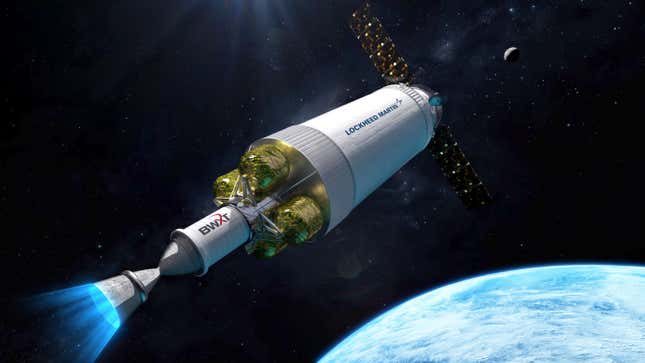
Spacecraft powered by nuclear energy may emerge as the leading innovation in the ongoing space exploration competition. The concept and blueprints for rockets equipped with nuclear reactors have existed for more than five decades but have remained in the realm of experiments. Despite aspirations to venture into uncharted territories, the United States’ recent drive to adopt nuclear propulsion aims to gain a strategic advantage over the nation’s new rival in space, the People’s Republic of China.
In 2023, NASA and DARPA granted Lockheed Martin a $499 million contract to construct the Demonstration Rocket for Agile Cislunar Operations. The DRACO, an acronym that catches the eye, will measure around 49 feet in length and 17.7 feet in diameter to fit the Vulcan Centaur rocket, which will transport it from the ground. The Centaur is set to become the launch platform for the Boeing Starliner. Ars Technica presented the arguments made by US Space Command to Congress in favor of DRACO:
DARPA’s mission has always been to invest in cutting-edge technologies for national security purposes. What relevance does a nuclear-powered spaceship hold in terms of national security? General James Dickinson, a US Space Command official, alluded to the military perspective during his testimony before Congress in April 2021.
He expressed that “Beijing intends to achieve dominance in space through space-based offensive capabilities” and pointed out intelligence gathered on the Shijian-17, a Chinese satellite equipped with a robotic arm capable of manipulating other satellites. While this may seem far-fetched, it was sufficient to obtain approval for a nuclear spacecraft.
The allure of nuclear-powered rockets lies in their efficiency. They are twice as efficient as conventional chemical rockets since they only require hydrogen as fuel and do not need an oxidizer to ignite in the vacuum of space. This efficiency can be leveraged to achieve incredibly high velocities. DRACO is envisioned as a platform for swift-response rockets traversing between Earth and the Moon, serving as a space-based military deterrent.
However, there’s a caveat. The rocket must carry fissile material for the reactor, specifically weapons-grade uranium. DRACO will utilize high-assay-low-enriched uranium (HALEU), a novel fuel with reduced enrichment levels and significantly limited potential for weaponization. The rocket’s operation is not expected to pose a threat to public safety as the Centaur’s chemical rocket will be employed for the launch.
Amidst concerns about the imminent end of the International Space Station, the current climate in space exploration is undeniably exhilarating. NASA’s Artemis program is actively working towards a permanent lunar presence with a base on the moon’s surface and a station in lunar orbit. Beyond that, Mars and the other celestial bodies in our solar system could be the next targets on the agenda.
[ad_2]
